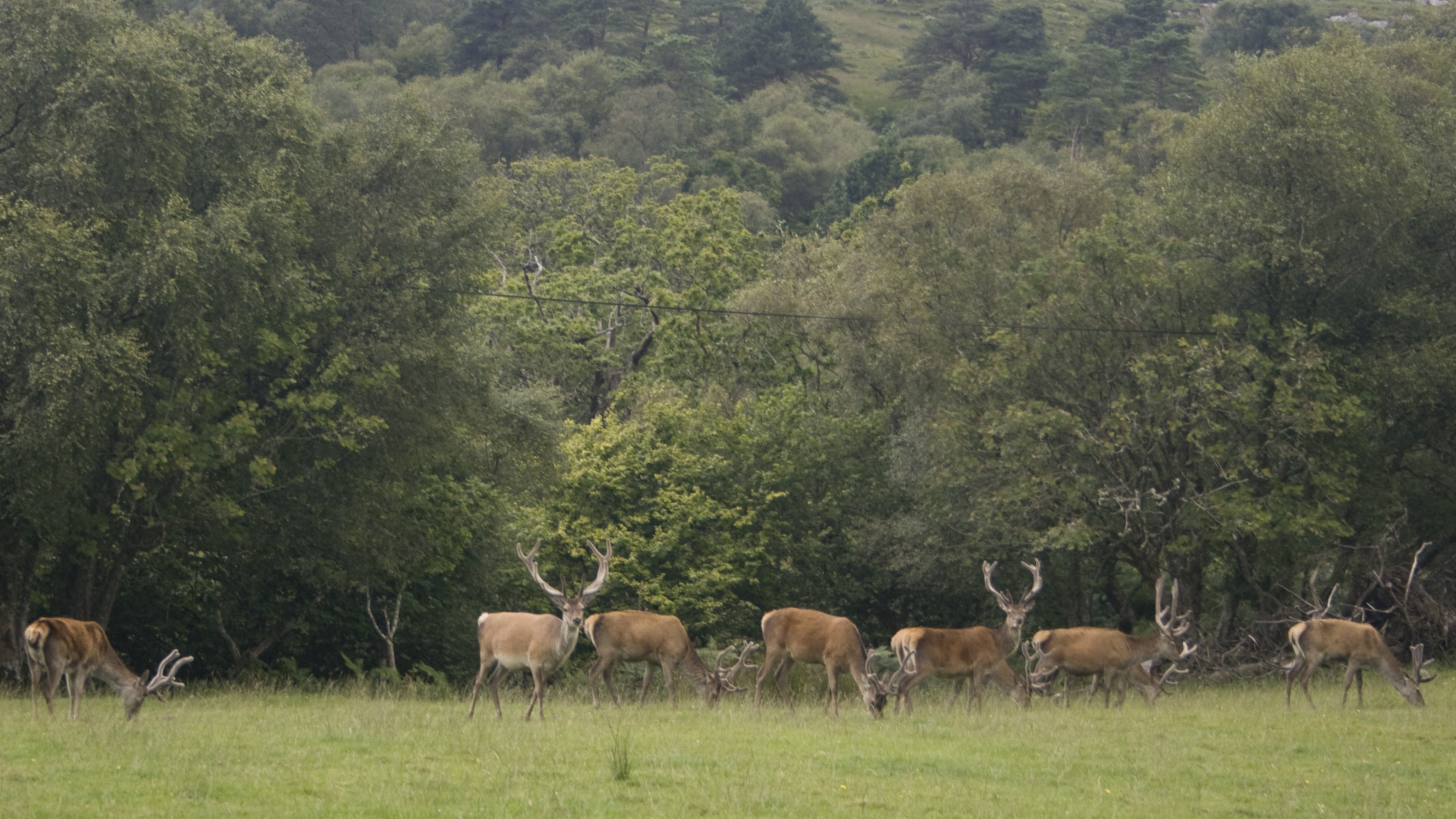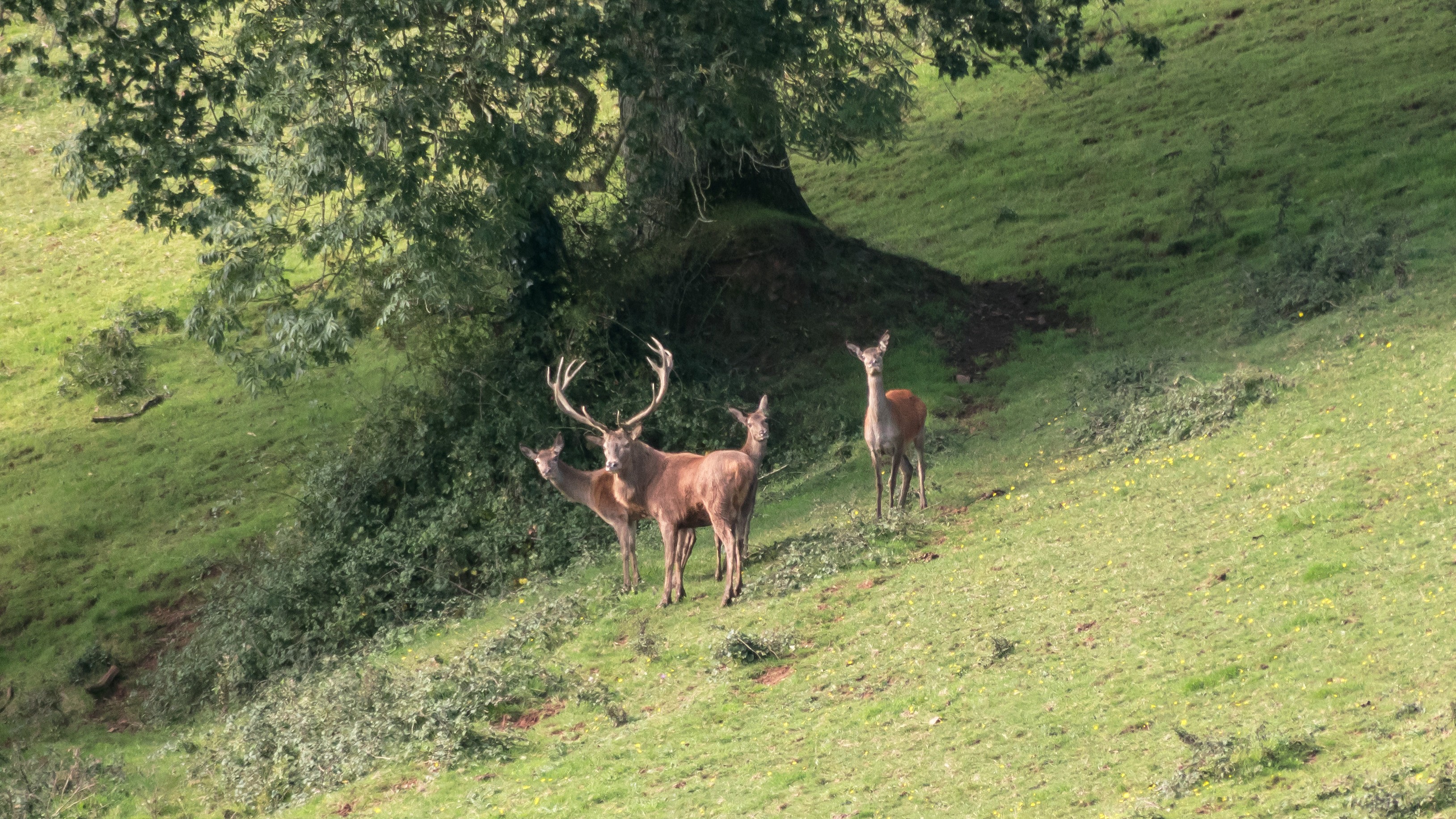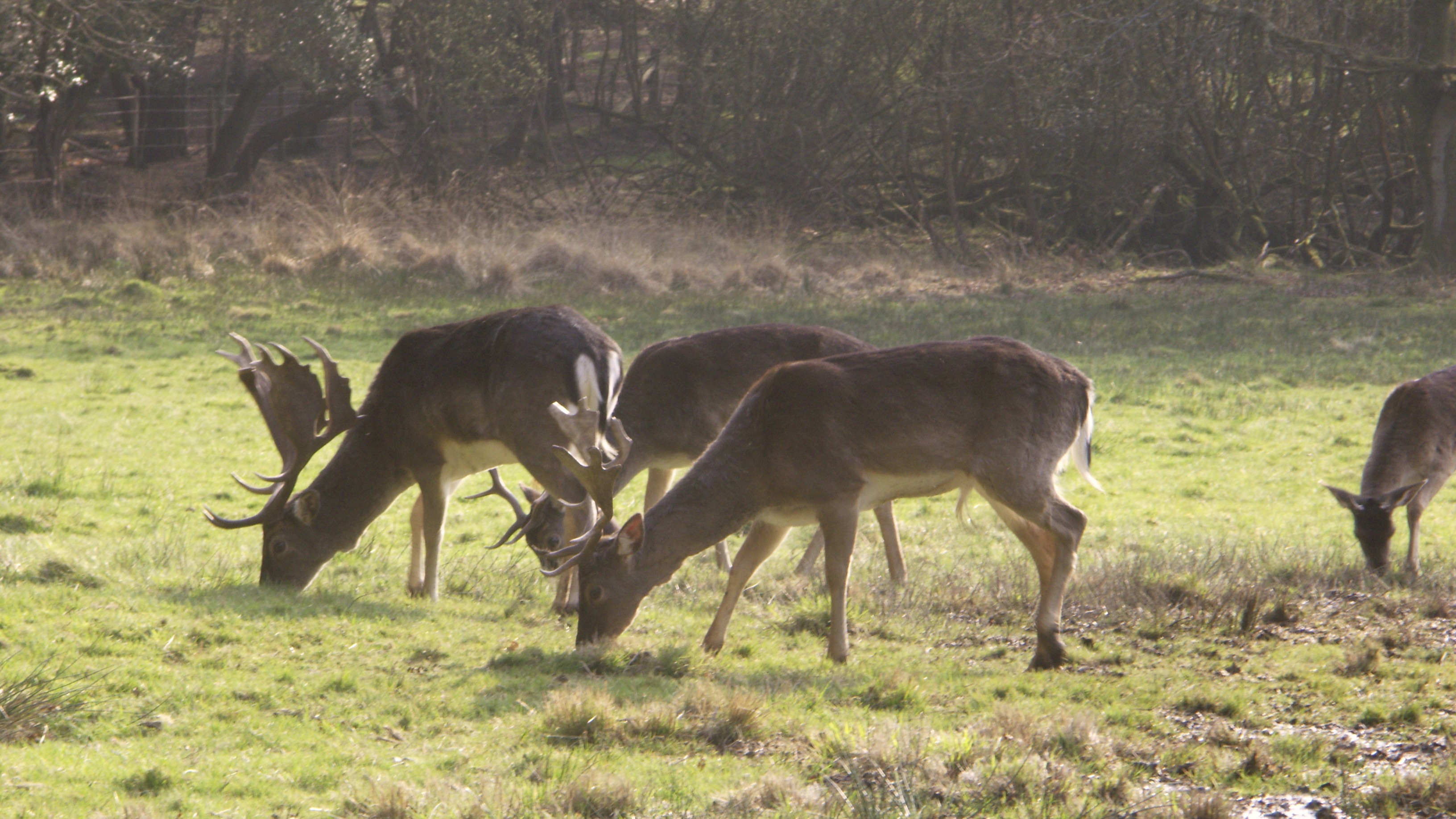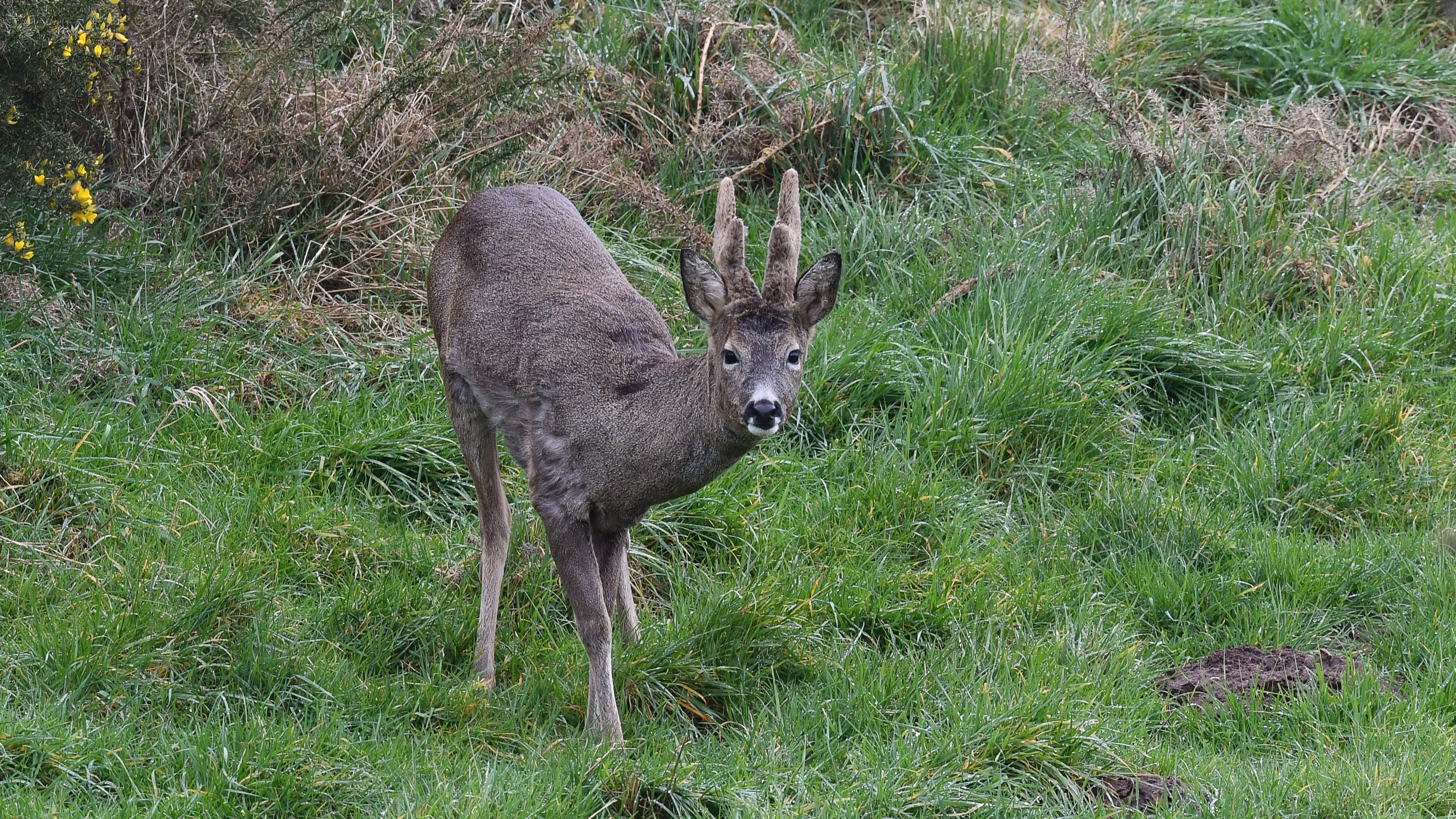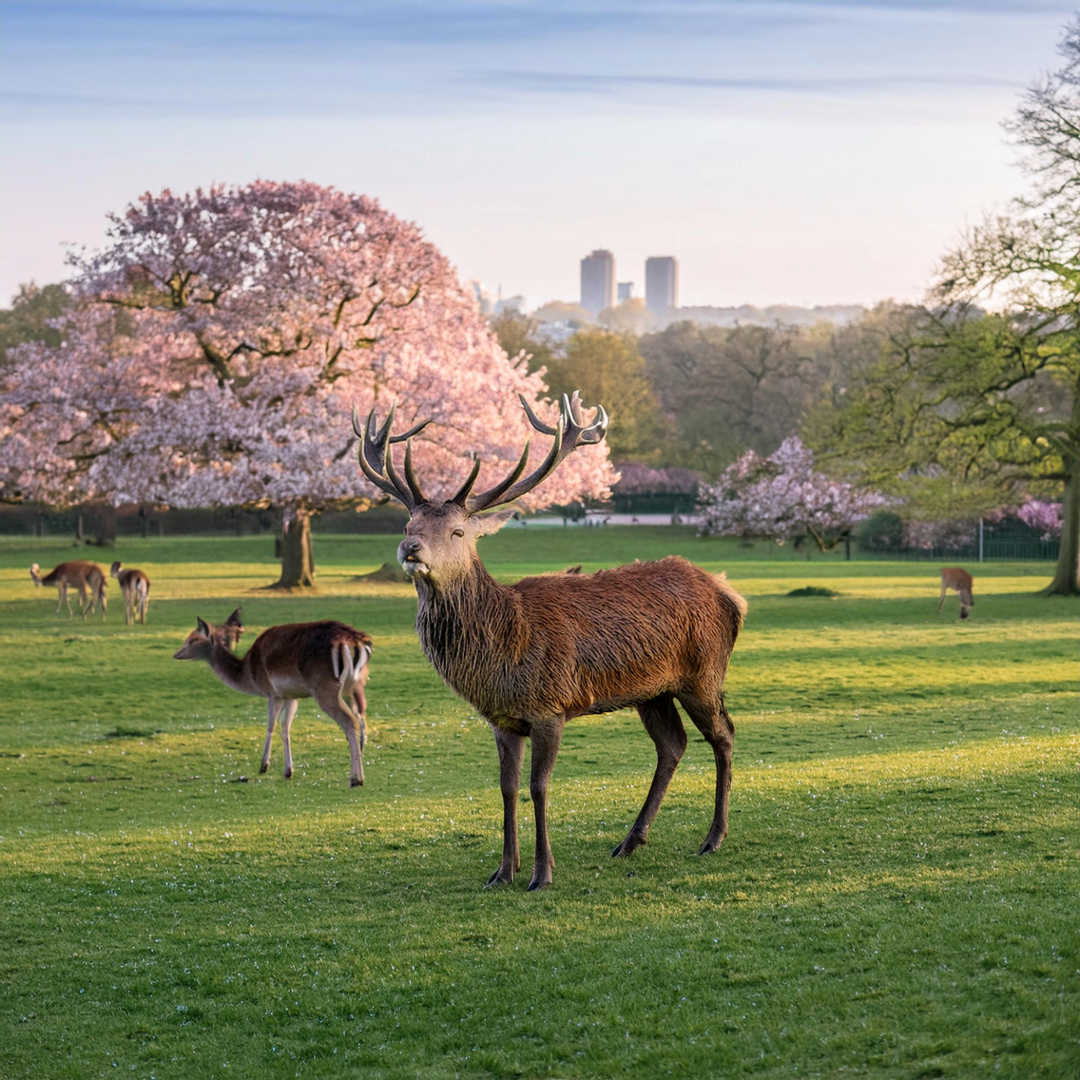
Red deer are now taking advantage of fresh green grass. A cold April, with little new grass, can be dangerous as they may have few fat reserves left. Any new antler growth is covered in velvet, which is blood temperature and very sensitive. In the region of three hundred red deer can be seen in Richmond Park. Unfortunately, a deer’s age cannot be ascertained by counting the points on its antlers, but they do indicate whether it is young or old. After one year males are called knobbers, at three squires, at four staggarts and only stags when they reach five. Once they are seven years of age they can be called harts. A stag with no horns at this time of year is a hummel. Between the ages of one and three, females are called hearsts and after four, hinds.
